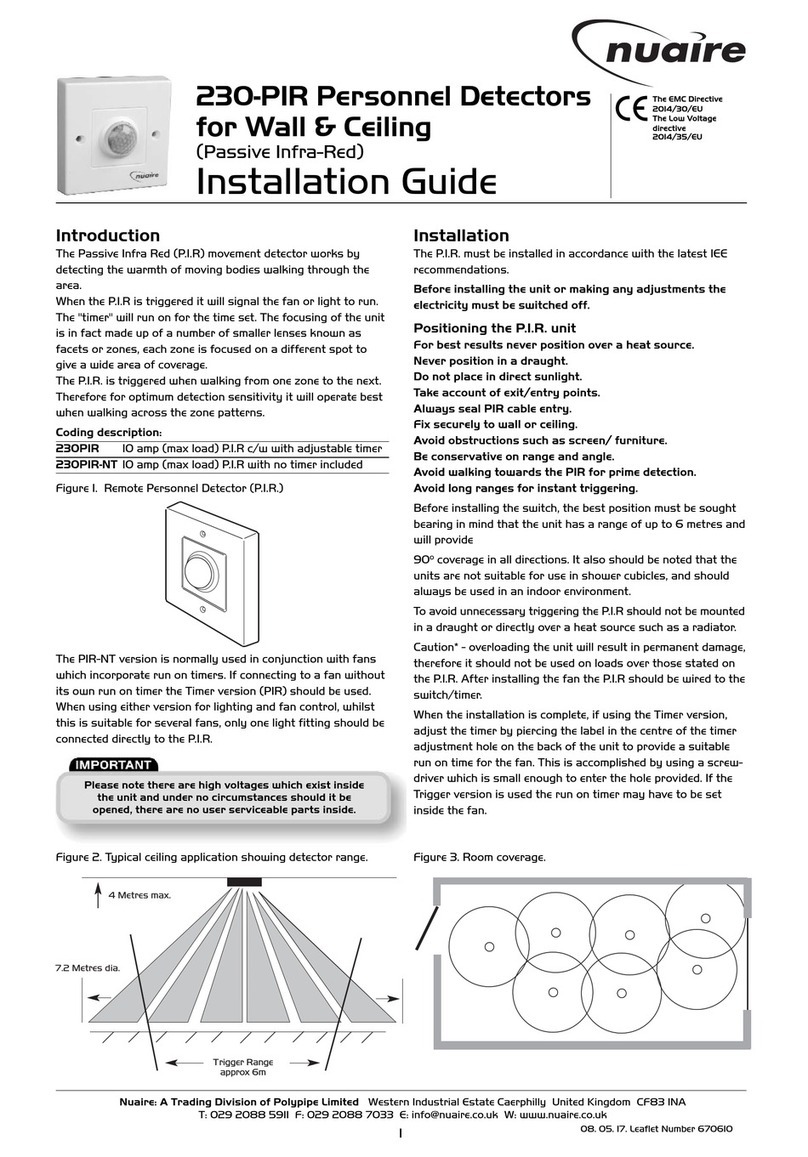
4
Nuaire | Western Industrial Estate | Caerphilly | CF83 1NA | nuaire.co.uk 08. 01. 24. Document Number 670610
230-PIRInstallation Manual
5.0 WARRANTY
The 1 year warranty starts from the day of delivery and includes
parts only.
This warranty is void if the equipment is modified without
authorisation, is incorrectly applied, misused, disassembled, or
not installed, commissioned and maintained in accordance with
the details contained in this manual and general good practice.
The product warranty applies to the UK mainland and in
accordance with Clause 14 of our Conditions of Sale. Customers
purchasing from outside of the UK should contact Nuaire
International Sales oce for further details.
6.0 END-OF-LIFE AND RECYCLING
Ensure that Nuaire product is made safe from any electrical /
water / refrigerant supplies before dismantling commences.
This work should only be undertaken by a qualified person in
accordance with local authority regulations and guidelines,
taking into account all site based risks.
Where possible Nuaire use components which can be largely
recycled when the product reaches its end-of-life:
•Fans, motors, controls, actuators, cabling and other electrical
components can be segregated into WEEE recycling
streams.
•Sheet metal parts, aluminium extrusion, heating/cooling
coils and other metallic items can be segregated and fully
recycled.
•EPP, plastic ducting, nylon corner pieces, plastic heat
exchangers, packaging material and other plastic
components can be segregated into mixed plastic and
widely recycled.
•Cardboard packaging, wood, used filters and other paper
components can be largely recycled or fully processed in
energy from waste centres.
•Remaining Items can be further segregated and processed
in accordance with the zero waste hierarchy. Please call
After Sales Support for further information on items not
listed above.
7.0 AFTER SALES AND REPLACEMENT
PARTS
For technical assistance or further product information, including
spare parts and replacement components, please contact the
After Sales Department.
If ordering spares please quote the serial number of the unit
together with the part number, if the part number is not known
please give a full description of the part required. The serial
number will be found on the identification plate attached to the
unit casing.
Telephone 02920 858 400
Technical or commercial considerations may, from time to
time, make it necessary to alter the design, performance and
dimensions of equipment and the right is reserved to make such
changes without prior notice.






















